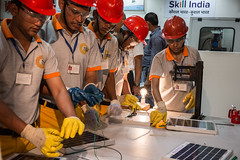Operating Digital Gig Platforms in Different Regulatory Environments: A Comparative Assessment of Kenya, Tanzania, and Ethiopia
This report analyzes the digital gig economy in Kenya, Tanzania, and Ethiopia and provides policy recommendations for a long-term approach that considers the needs of platforms, gig workers, consumers, and the government authorities themselves.




